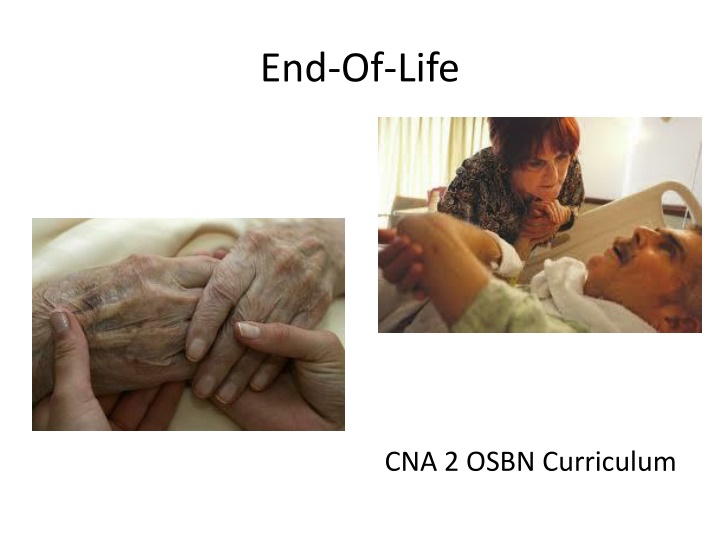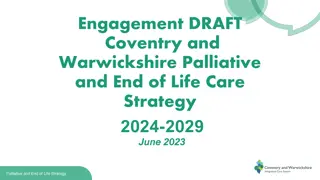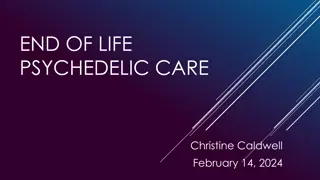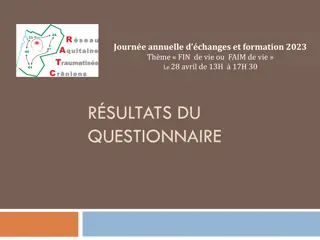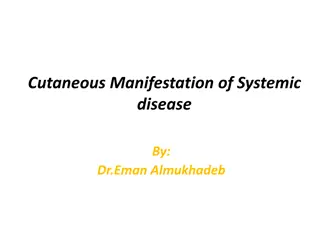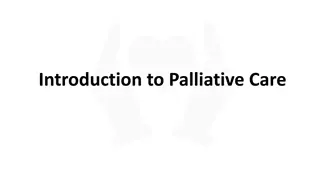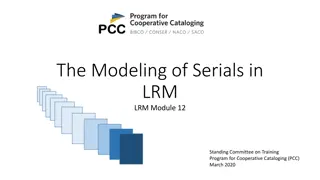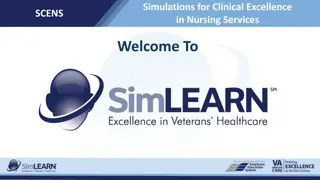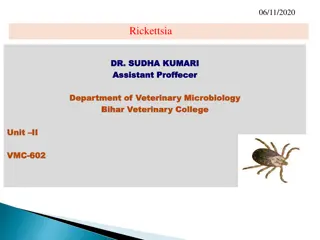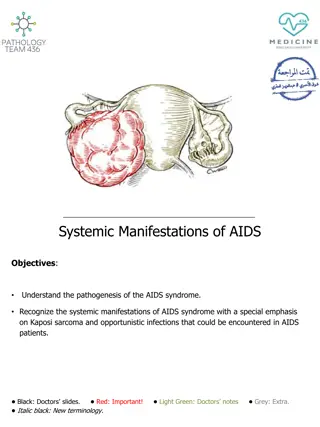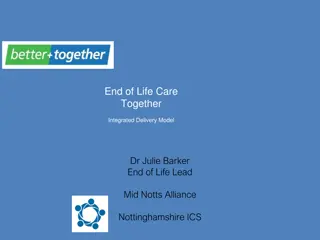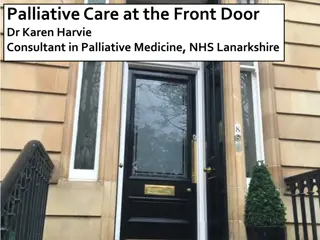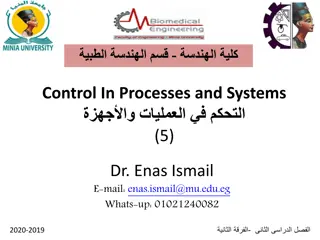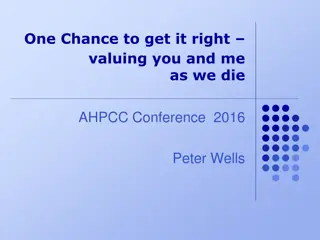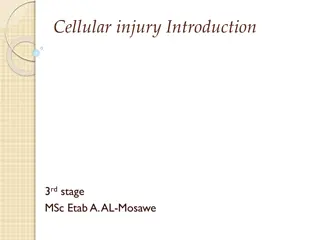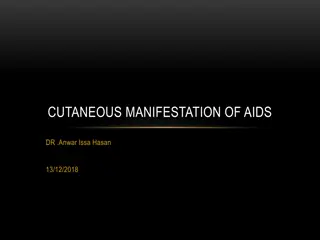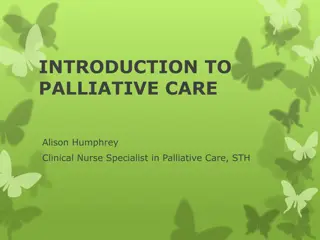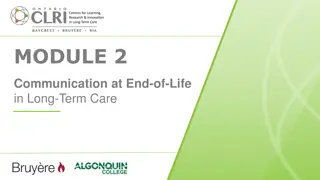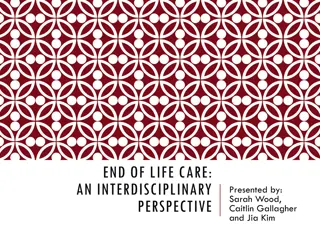End-of-Life Care: Understanding Physical Manifestations and System Responses
End-of-life care focuses on addressing the physical and psychosocial needs of individuals and their families during the dying process. It aims to provide comfort, supportive care, and improve the quality of life in the remaining days. Death occurs when vital organs cease to function, and specific physical manifestations occur across various systems in the body, indicating the body's decline towards the end of life.
Download Presentation

Please find below an Image/Link to download the presentation.
The content on the website is provided AS IS for your information and personal use only. It may not be sold, licensed, or shared on other websites without obtaining consent from the author.If you encounter any issues during the download, it is possible that the publisher has removed the file from their server.
You are allowed to download the files provided on this website for personal or commercial use, subject to the condition that they are used lawfully. All files are the property of their respective owners.
The content on the website is provided AS IS for your information and personal use only. It may not be sold, licensed, or shared on other websites without obtaining consent from the author.
E N D
Presentation Transcript
End-Of-Life CNA 2 OSBN Curriculum
End of Life Care Focuses on physical & psychosocial needs for the person & their family Goals Provide Comfort & supportive care during the dying process Improve the quality of their remaining life Help ensure dignified death
Death occurs when all vital organs and systems cease to function. It is the irreversible cessation of circulatory & respiratory functions or the irreversible cessation of all functions of all functions of the entire brain including the brain stem.
Physical Manifestations Sensory System Hearing Usually the last to go Touch Decreased sensation & perception of pain/touch Taste & Smell Decreased with disease progression Vision Blurring of vision & glazing of eyes Blink reflex absent & eyelids remain half open
Integumentary System Mottling on extremities Cold clammy skin Cyanosis on nose, nail beds, knees Respiratory System Increased respiratory rate Cheyne-Stokes Breathing (periods of apnea & deep rapid breathing) Inability to cough or clear secretions causing grunting, gurgling, or noisy congested breathing Irregular breathing, gradually slowing down to terminal gasps Urinary System Gradual decrease in UOP Incontinent of urine or unable to urinate
Gastrointestinal System Slowing of GI tract & possible cessation (side effect of pain medications) Accumulation of gas Distention & nausea Incontinence due to loss of sphincter control BM may occur before imminent death or at time of death Musculoskeletal System Gradual loss of ability to move Sagging of jaw resulting from loss of facial muscle tone Swallowing can become more difficult Difficulty maintaining body posture & alignment Loss of gag reflex For patient on large doses of pain medication (opioids) will might see jerking
Cardiovascular System Increased heart rate Later slower & weakening pulse Irregular rhythm Decreased BP
The Dying Person May Need to Talk (There are some things they may not want to discuss with family) Express Feelings Share Worries & Concerns Just Be There (Don t feel you need to talk) Silence is OK Therapeutic Touch Your Personal Attitude about Death will influence the way you provide care Report Abnormals to Nurse
The Family of the Dying Person May need to talk express feelings, share worries, and concerns away form the dying patient. They may just need you to listen. They may require a private area to talk & make decisions The focus is often on the patient & they often neglect their own needs May need to get them pillows, blankets & a place to sleep Meals if necessary Chaplain Report anything significant said by the family to the nurse
Different Services Available Palliative Care The active total care of individuals whose disease is not responsive to curative treatment (example end stage COPD) Focuses on: Controlling pain & other symptoms Hospice Care (terminally ill) Provides compassion & support for the dying patient & family Home Health Chaplain
Hospice care involves a team-oriented approach from expert medical care, pain management, and emotional and spiritual support expressly tailored to the patient's needs and wishes. Support is provided to the patient's loved ones as well. At the center of hospice and palliative care is the belief that each of us has the right to die pain-free and with dignity, and that our families will receive the necessary support to allow us to do so.
CNA 2 Responsibilities Comfort measures (comfort care) to provide for a person & family at the end of life Pain management Report pain to the nurse Bathe, reposition, etc. Music Touch Hold a hand Gentle Massage Hand on visitors shoulder Religious needs Visit from chaplain Reading of scripture Snacks & drinks for visitors Supportive presence Non-aggressive medical treatment
CNA 2 Skill: Provide comfort measures for the person at end-of- life or on hospice care (see previous slide) CNA 2 Skill: Removal of non-surgically inserted tubes and devices from post-mortem person Post-Mortem Care begins when the person is pronunced dead Maintain privacy & treat with dignity Done to maintain good appearance of the body Discoloration & skin damage are prevented Bathe patient as needed (often incontinent) Position body in normal alignment Rigor mortis begins 2-4 hours after death Stiffness or rigidity of skeletal muscles Removal non-surgically inserted tubes & devices Under direction of nurse. Some patients have to be cleared by medical examiner and can not have tubes out until cleared.
Organ Donation The decision to donate may be made by the person before death or by immediate family members after death. Nurses my delegate specific tasks as allowed by P&P
This project was funded $3,000,000 (100% of its total cost) from a grant awarded under the Trade Adjustment Assistance Community College and Career Training Grants, as implemented by the U.S. Department of Labor s Employment and Training Administration. Rogue Community College is an equal opportunity employer/program. Auxiliary aids and services, alternate form and language services are available to individuals with disabilities and limited English proficiency free of cost upon request. This work is licensed under a Creative Commons Attribution 4.0 International License.
